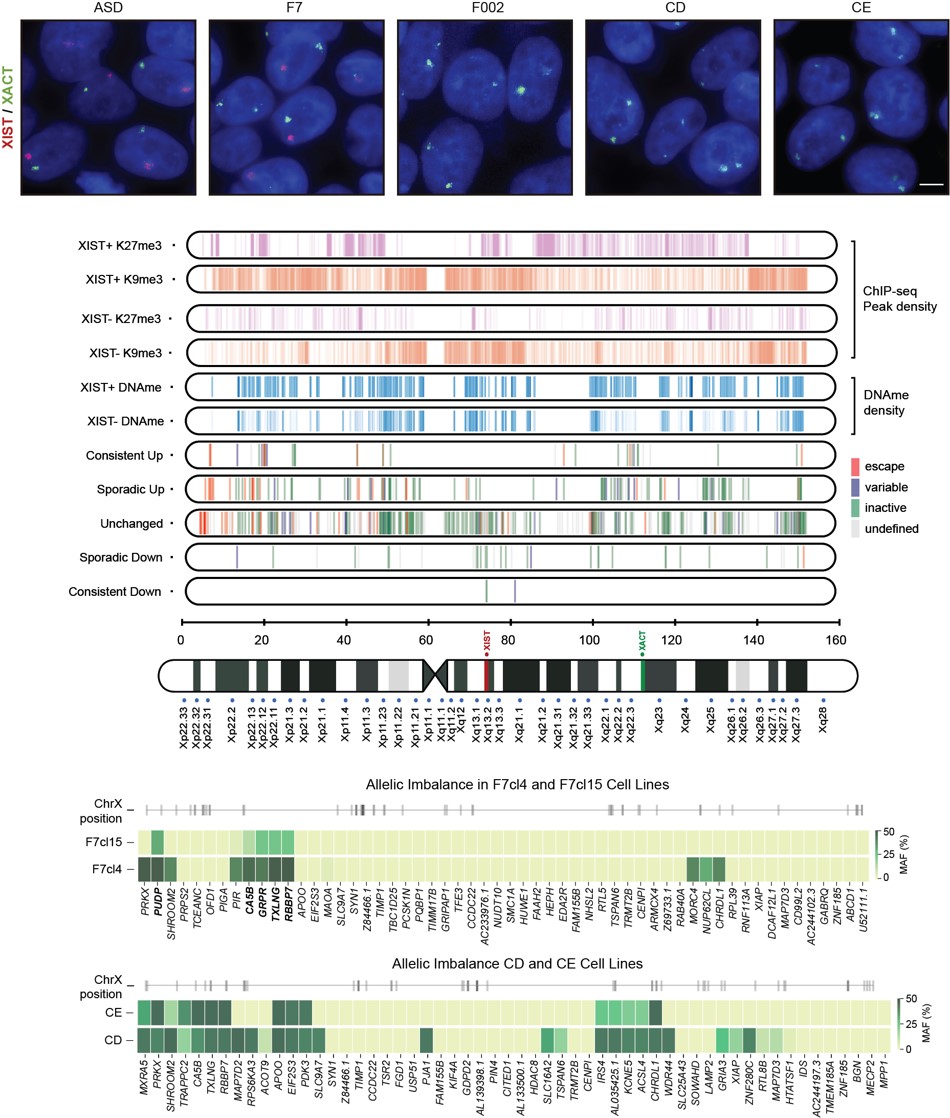X-Chromosome Erosion is Predictable yet Heterogeneous in Female hiPSCs

X-chromosome inactivation (XCI) ensures dosage compensation between females (XX) and males (XY) through transcriptional silencing of one X chromosome. Female human induced pluripotent stem cells (hiPSCs) frequently show XCI erosion, a process characterized by the loss of XIST RNA and subsequent partial reactivation of genes from the inactive X-chromosome (Xi). This phenomenon, often overlooked, has significant consequences for stem cell applications.
In a new study published in Stem Cell Reports, researchers from the Stem Cell Engineering Research Group (SCERG-iBB), demonstrated that XCI erosion in female hiPSCs is both frequent and heterogeneous, leading to the reactivation of multiple X-linked genes. These reactivated genes are primarily located on the short arm of the X chromosome, often near known escape genes and within H3K27me3-enriched domains, with reactivation linked to reduced promoter DNA methylation. Interestingly, even XCI escape genes show increased expression from the Xi during erosion, highlighting XIST's crucial role in dosage regulation for these genes. Importantly, this erosion does not broadly affect global methylation levels or imprinted regions and persists across differentiation. These findings underscore the need for greater awareness of the implications of XCI erosion for stem cell research and clinical applications.
The study, first authored by Ana C. Raposo and Paulo Caldas, was performed under the supervision of Simão T. da Rocha (Stem Cell Epigenetics Lab) in collaboration with the Computational Multi-Omics lab (UCIBIO-NOVA-FCT) and groups in the UK and Australia. See more.
